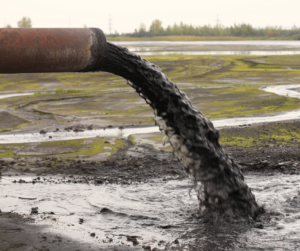Painting a house requires a lot of prep work, including sanding the surface and removing hardware. It is also important to choose the right time of year to paint, as this helps prevent moisture and mold problems.
A professional house painter will provide a warranty on their work. They will also offer excellent customer service. Contact Alvarez Painting LLC now!

House painters are skilled professionals who apply paint to interior and exterior surfaces, enhancing the look and feel of a building, office space or home. They may also stain and do some light carpentry work. They must be knowledgeable about the various types of paint, the materials and the best way to apply them. They must also take the proper precautions when working, such as placing protective covers over valuable items. They are also required to take safety measures when using ladders and other equipment.
The qualifications of a house painter vary from state to state, but most require a high school diploma and some experience as an assistant painter. Many painters acquire their skills on the job or through apprenticeship programs, which typically last for several years. They must also comply with local, state and federal regulations. Some states also require a license.
Besides having technical skills, house painters must have the ability to work with different types of people and understand how to communicate effectively. This is especially important when working with clients. Good communication skills include active listening, observing and empathizing with others. They must also be detail-oriented and able to solve problems quickly. They must also be able to follow directions and stay on budget.
House painting is a physically demanding job, so a painter should have the physical strength to lift heavy equipment and climb ladders. In addition, they should be able to work under varying weather conditions, including hot and cold temperatures. They should also be able to tolerate prolonged periods of standing and walking.
They must be able to operate equipment, such as power washers, scrapers and sanders. They must also be able to use brushes, rollers, spray guns and texturing tools. They must also be able to read blueprints and use basic measuring techniques. In some cases, a house painter must be able to perform drywall repairs and other minor carpentry projects.
A professional house painter should have a variety of marketing tools to advertise their services. In addition to flyers and business cards, they can make use of social media and online listings. They should also be able to provide customers with examples of previous work and references.
Job duties
House painters are responsible for applying paints, wall coverings, and other finishes to interior and exterior surfaces of residential homes. They must be able to mix and match colors, understand different application techniques, and know how to use a variety of painting tools. They should also be able to communicate effectively with customers and supervisors.
One of the most important job duties for a house painter is to present accurate estimates before starting work. This will help homeowners choose the right contractor for their project. Make sure that the estimate includes a description of the job, paint and labor costs, and a timeframe for completion. It’s also a good idea to ask about the contractor’s insurance coverage in case of any damage or injuries on the job site.
Other job duties include preparing surfaces to be painted, mixing and matching paints, and completing touchups. They must also be able to use a variety of painting tools, including brushes, rollers, and spray guns. They may also be required to perform minor repairs and fill cracks in walls or ceilings with caulk, plaster, putty, or other fillers.
Another important skill for a house painter is problem-solving. They must be able to think on their feet and resolve unexpected challenges, such as surface problems or supply shortages. They must also be able to manage their time well and meet deadlines. A quality house painter should have a high standard of workmanship and be committed to excellence.
During the interview, you should also ask the candidate about their work history and previous projects. This can give you an idea of their experience and how they might be able to apply it to your project. You should also ask about their communication skills and how they deal with difficult situations on the job site.
You should also mention any special requirements that are necessary for the job, such as a valid driver’s license or the ability to follow detailed instructions. In addition, you should also specify the type of equipment and supplies they will need to bring with them to the job site.
Salary
A house painter is a tradesperson who applies coats of paint, varnish, stain, or enamel to decorate or protect interior or exterior surfaces, trim, or fixtures. This can include furniture, walls, or even structures such as roofs, gates, fences, and windows. They are also known as decorators and may use decorative painting techniques, such as the distinctive Ndebele style of South African art, to add visual interest to a building or surface. In the United States, most painters are self-employed or operate small businesses with a few employees. Others are members of union apprenticeship programs, which can provide additional benefits, including pension and medical coverage.
The salary of a house painter can vary widely, depending on the level of experience and skill. A professional with extensive experience and a proven track record will be able to command a higher hourly rate or annual salary. In addition, certain locations may have a higher demand for professional painters and therefore drive up local salary amounts.
Aside from the obvious skills of being able to properly apply paint and brushes, a good house painter should have a high degree of knowledge about materials and tools. They should be able to explain the differences between different types of paint, and advise homeowners on which type will be best for their home. They should also have a solid understanding of basic wall construction and repair, and be able to estimate the amount of time required for each task.
Another important quality of a house painter is their ability to communicate with customers in a friendly and polite manner. This is especially important when dealing with elderly or ill clients who may have limited mobility or vision. A good painter should also be able to follow health and safety rules on the job site.
Aside from these qualifications, a good house painter will maintain adequate insurance and business credentials to avoid liability issues. They should also be able to provide references from past clients. Finally, they should have a solid understanding of the pricing of materials and labor.
Work environment
A high-quality paint job can add both aesthetic value and long-term protection to your home. If you are looking for a house painter, it’s important to prioritize qualifications, experience, work samples, cost transparency, and effective communication. This can help you make the best decision for your project and ensure that you are satisfied with the final result. You should also consider hiring a company that offers sample paints and digital visualizations to help you evaluate the color palette and finish in different lighting conditions.
House painters use various tools like brushes, spray guns, and paint rollers to paint surfaces. They also prepare surfaces by smoothing rough spots and applying caulking compounds. They may also remove fixtures, such as pictures, doorknobs, lamps, and electric switch covers, before painting. They are also responsible for preparing and cleaning up their equipment after each job.
Working as a house painter can be messy and odorous, so you should be comfortable with this environment. You should also be willing to wear protective gear, such as a face mask and disposable gloves. This will minimize the risk of getting paint on your skin and eyes. In addition, you will likely need to move furniture and set up ladders and scaffolding for certain jobs.
You should also choose a contractor with experience in your specific area of expertise. You can find this information in online reviews or by asking other contractors for referrals. A reputable contractor should provide you with a detailed written contract that includes a description of the project, payment schedules, and details about the products used. It should also include provisions for unforeseen circumstances, such as weather delays.
It is important to choose a professional house painter, as they have experience in working on all types of surfaces and can help you achieve your vision for your home. They can also help you select the best colors and finishes, and will be able to provide advice on color palettes and finishes for your home’s exterior and interior. In addition, a professional will be able to answer any questions you have about the process and provide you with a detailed estimate of the cost of your painting project.




